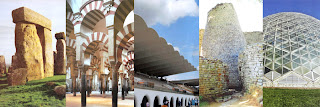Introduction
HUMA 1315 - Introduction
Introduction
“The arts play important roles in making the world around us more interesting and habitable. Artistic ideas join with conventions to make everyday objects attractive and pleasurable.” (p. 15)
Convention represents art existing in the real world, no longer as pure idea, but as concrete reality.
Volkswagen Beetle 1953 (p. 17)
Volkswagen Beetle - evolution of style
ARTS and WAYS of KNOWING
“We live in buildings and listen to music. We hang pictures on our walls. We enjoy public parks, novels, a statue in front of a public building, and dance through the night. All these situations involve forms called art.” (p. 20)
Lascaux Cave, France, c. 15,000 BCE (p. 20)
Shepard Fairey - Rise Above, W. Dallas, 2012
“Visual art, architecture, music, theatre, dance, literature, and film belong in a broad category of pursuit called the humanities,” along with other disciplines such as philosophy and history, as opposed to the sciences. (p. 20) “The humanities can broadly be defined as those aspects of culture that look into what it means to be human.” (p. 21)
The humanities enrich and inform our lives everyday, through practices that engage human interaction in:
Creativity • Aesthetics • Symbols • Fine and Applied Art
CREATIVITY
Creativity takes “chaos, formlessness, vagueness, and the unknown, and crystallizes them into form, design, inventions, and ideas.” (p. 21)
Robin Rhodes, S. Africa - He Got Game, 2001
Robin Rhodes, S. Africa - He Got Game (detail), 2001
Pottery Wheel Throwing (p. 72)
Nampeyo - Various Pottery Designs, early 20th c.
AESTHETICS
Aesthetics deals with “what constitutes the beautiful and in the relationship between art and nature.” (p. 22)
Vine growing in nature
Roped Pot, Igbo-Ukwu, E. Nigeria 9th-10th c. (p. 25)
“Both Plato and Aristotle saw art as imitation and beauty as the expression of a universal quality. For the Greeks, the concept of “art” embraced all handcrafts and the rules of symmetry, proportion, and unity applied equally to (all media).” (p. 22)
Raphael - School of Athens, 1510-11
Plato (lt. center) pointing skyward to indicate his Theory of Forms, Aristotle (rt. center) hand toward earth emphasizing concrete reality.
SYMBOLS
Symbols are an “emblem of something abstract: a mundane object evoking a higher realm. They differ from signs, which suggest a fact or condition. Symbols carry deeper, wider, or richer meanings.” (p. 22)
Yeats’ “use of the rose to symbolize death, ideal perfection, Ireland” etc. (p. 22)
Erna Motna - Bushfire and Corroboree Dreaming, 1988 (p. 57)
FINE and APPLIED ARTS
The Fine Arts are considered mainly for their aesthetic qualities. TheApplied Arts are primarily utilitarian, though they also consider aesthetics.
The Fine Arts include “painting, sculpture, architecture, music, (literature), theatre, dance, and cinema”. (p. 22)
The Fine Arts include: painting, sculpture, architecture, music, dance
The Applied Arts, also known as Decorative Arts, include “handcrafts such as work in metal, stone, wood, and glass, as well as textiles, pottery, bookbinding…jewelry, weaponry, tools, costumes…even mechanical appliances and industrial design”. (p. 22)
The Applied Arts include: pottery, metal/tools, textiles
Industrial Design: Braun Juice Extractor 1950-58 (p. 23)
Purposes / Functions of Art
The arts exist for a variety of purposes or functions, including:
DOCUMENTATION
SELF-EXPRESSION
SPIRITUALITY
PERCEPTION / NEW FORMS
ENJOYMENT
SOCIAL / POLITICAL
Documentation: Jean Baptiste-Camille Corot - View Near Volterra 1838(p. 31)
Self-Expression: Vincent Van Gogh - Starry Night 1889 (p. 32)
“Feelings can be referenced in works of art through technique - for instance brushstroke - and through color, both of which have long associations with emotional content.” (p. 23)
Spirituality: Chauvet Cave, France (p. 15)
Perception / New Forms: Alexander Calder - Eleven Polychrome 1961 (p. 70)
Enjoyment: Pablo Picasso - Girl Before Mirror 1932 (p. 52)
Social / Political: Pablo Picasso - Guernica 1937 (p. 31)
Criticism
“Identifying the formal elements of an artwork - learning what to look for - forms the first step of art criticism. We describe an artwork by examining its many facets and then we try to understand how they work together to create meaning and experience. We then try to state the nature of that meaning or experience.” (p. 26)
Style and Culture
Style: The individual characteristics of a work of art that identify it with a particular artist, nationality, historical period, or school of artists.
Architectural Styles: Gothic (French cathedral), Classical (Greek temple), Byzantine (Russian cathedral)
Culture (Merriam-Webster): 1. the integrated pattern of human behavior that includes thought, speech, action, and artifacts and depends upon the human capacity for learning and transmitting knowledge to succeeding generations. 2. the customary beliefs, social forms, and material traits of a racial, religious, or social group.
Summary of Chapters
Two-Dimensional Arts
Sculpture
Architecture
Music and Opera
Literature
Theatre
Cinema
Dance
The Two-Dimensional Arts (Chapter 1) include: drawing, painting, printmaking, photography
Sculpture (Chapter 2) can be freestanding, relief, linear, environmental, carved
Architecture (Chapter 3) techniques include: post and lintel, arch, cantilever, bearing wall, skeleton frame
Literature (Chapter 5) includes: fiction, non-fiction, poetry, scripture
Challenging tradition: Samuel Beckett Waiting for Godot 1953 (p. 26)
Theatre (Chapter 6) includes: comedy, tragedy, tragicomedy, melodrama, performance art
Cinema (Chapter 7) includes: narrative and documentary forms


































0 Comments:
Post a Comment
Subscribe to Post Comments [Atom]
<< Home